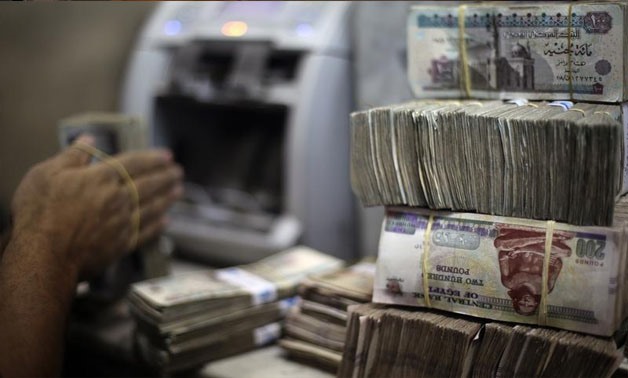
An employee counts money at an exchange office in downtown Cairo June 5, 2014 - REUTERS/Amr Abdallah Dalsh
CAIRO – 6 January 2018: The improved performance of Egypt’s main sectors accompanied with a tighter fiscal policy drove an economic rebound in 2017, Oxford Business Group (OBG) said in a report Friday.
The report said that Egypt’s economy maintained an upward trajectory in fiscal year 2016/17, registering 4.2 percent growth, higher than the International Monetary Fund’s (IMF) expectations of 3.5 percent.
Growth has particularly accelerated in the second half of 2017, expanding at an average rate of 4.6 percent at market prices, which is the fastest pace since fiscal year 2009/10, the report said, predicting growth to accelerate further in 2018.
Finance Minister Amr el-Garhy expects growth to reach 5-5.25 percent in fiscal year 2017/18.
The report said that the strengthening economy had had positive implications on the state finances, with the fiscal deficit dropping to two percent of GDP by the end of September, down from 2.2 percent in the same period last year.
Balance of payments also improved, with Egypt recording a $13.7 billion surplus in fiscal year 2016/17, up from a $2.8 billion deficit in the preceding 12 months, the report said.
It also referred to other positive indicators, such as cooling inflation, which dropped to 26.7 percent in November, the lowest level since the flotation of the Egyptian pound in late 2016, which caused inflation to skyrocket, reaching a peak of 30 percent in July.
The report further pointed to easing unemployment, with the jobless rate falling from 12.5 percent at the beginning of 2017 to 11.9 percent by the end of September, its lowest since 2011.
The report said that tourism, one of Egypt’s main foreign currency earners, picked up in 2017. It cited the Central Bank of Egypt’s (CBE) data that showed the sector recovering from a contraction of 25.5 percent in 2015/16 to post growth of 3.9 percent in 2016/17.
This growth was not only buoyed by a higher number of arrivals from traditional source markets, such as Western Europe, but also visitors from new markets, including China and the Gulf, the report said.
The best performing sector in 2016/17, however, was communications, which recorded growth of 12.5 percent, followed by construction and transport, which expanded by 9.5 percent and 5.3 percent, respectively.
Agriculture and manufacturing, traditional mainstays of Egypt’s economy, posted gains of 3.2 percent and 2.1 percent, while extraction industries declined by 1.8 percent, the report added.
Egypt has embarked on a bold economic that included the introduction of new taxes and cutting energy subsidies, with the aim of trimming the budget deficit and revive the economy.
After floating the pound, Egypt clinched a $12 billion loan deal with the International Monetary Fund (IMF).
Egypt is to receive a fourth disbursal of that loan, worth $2 billion, in June or July, the Finance Ministry said, bringing the total it has received to $8 billion. The IMF agreed last month to the third disbursal, also worth $2 billion.


Comments
Leave a Comment